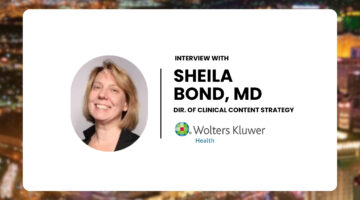
Clinicians are drowning in documentation-related work, with mountains of patient data to sift through before they can even begin writing a note. Cedars-Sinai believes its new partnership with Regard could help give overworked physicians a lifeline.
This month, the Los Angeles-based health system rolled out Regard’s documentation platform across two of its hospitals. The platform reviews and organizes data from the patient’s chart, offers diagnostic insights and produces draft clinical notes ahead of the physician’s visit.
By quickly synthesizing patient data and drafting notes, Regard’s technology aims to reduce the time and mental effort physicians spend on documentation, giving them more time to focus on clinical decision making.

Integrating GLP-1s: How Berry Street is Redefining Nutrition Care
Richard Fu details the company's approach to nutrition therapy and strategy for patients using GLP-1s.
Cedars-Sinai is currently in the process of rolling out the technology and teaching clinicians how to use it, beginning with high-volume admitting physicians in the internal medicine field, said Shaun Miller, the health system’s chief health informatics officer.
He noted that Regard first connected with Cedars-Sinai in 2017 through the health system’s accelerator program, in which the startup was an early participant.
“We’ve worked with them for a while, and we know that they built the product from the ground up with the clinician at the center,” Miller stated.
Cedar-Sinai is also an investor in the startup, with its venture capital arm contributing to Regard’s $61 million Series B funding round last year.

Transforming Clinical Content with Ambient & Generative AI
Sheila Bond, MD, talked about the latest trends regarding integration of AI in healthcare.
Unlike documentation tools that focus mainly on ambiently listening to patient conversations, Regard also taps into the patient’s chart, producing a more comprehensive note, Miller pointed out.
He added that Regard has developed a strong tool for hospital-based care, as opposed to documentation startups that serve mainly physicians in outpatient settings.
“We’re seeing a lot of AI in the outpatient space, but not as much in the hospital space, where patients are complex. When they’re being admitted, there is a lot of data that needs to be gathered and brought together in a very reliable way,” Miller explained.
By deploying Regard’s technology, Cedars-Sinai is aiming to ease the heavy cognitive load that hospitalists face when managing complex patient charts. The main goals are to relieve both documentation and cognitive burden, as well as make acute care more efficient and less mentally taxing, Miller said.
As the health system monitors the success of this deployment, it will focus primarily on clinician satisfaction and how they feel the technology fits into their day-to-day routines, he stated.
Ultimately, the hope is that Regard will give hospital physicians more breathing room to focus on patients rather than administrative chores.
Photo: SimpleImages, Getty Images






